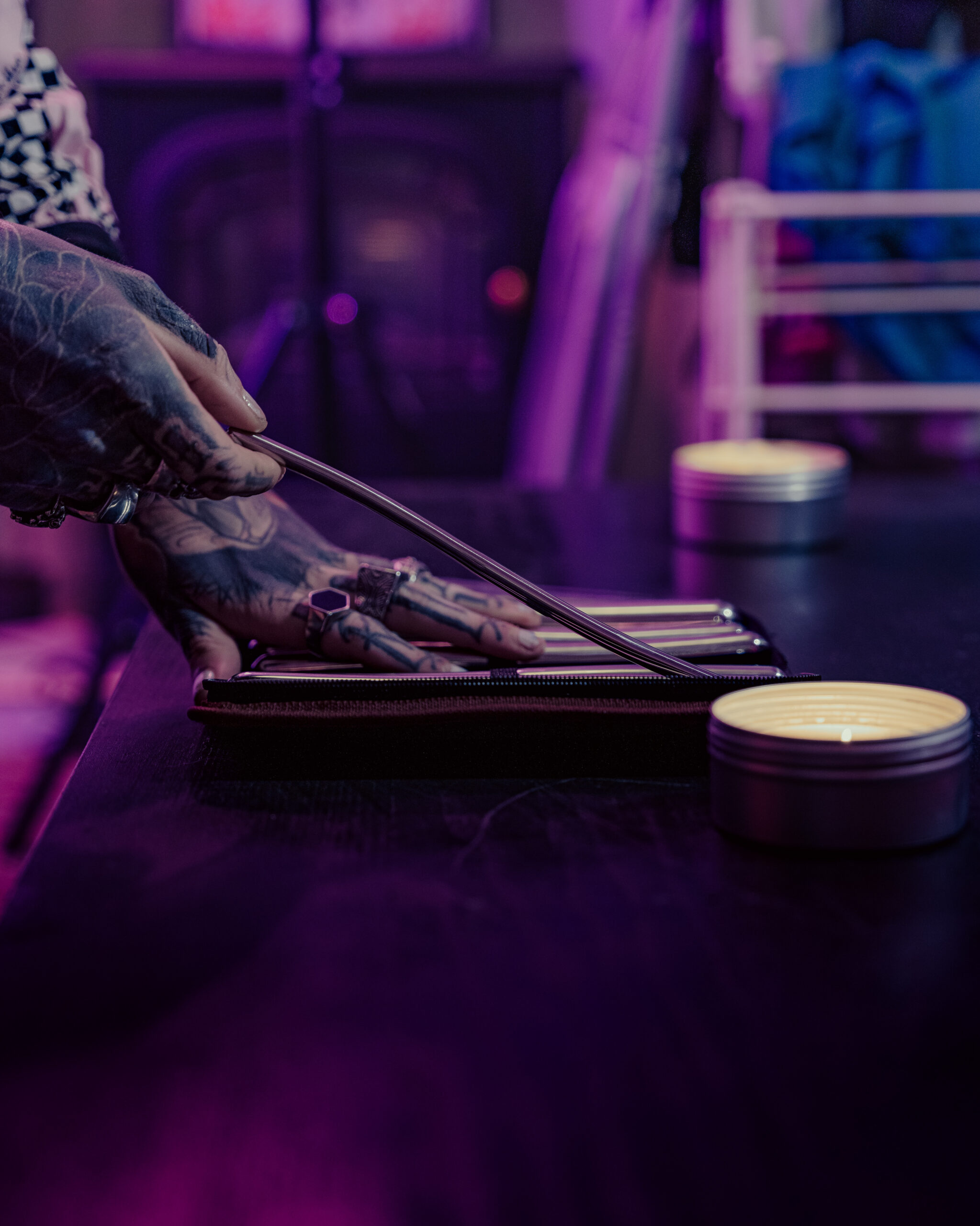How To Spot Breadcrumbing And Why You Shouldn’t Tolerate It

Identifying Breadcrumbing
In the realm of dating, certain patterns can signal unhealthy communication styles. One such pattern is “breadcrumbing,” where someone intermittently shows interest but never commits to a genuine connection. Recognizing the subtle signs of breadcrumbing is crucial for protecting your emotional well-being and avoiding wasted time.
Signs to Watch For
In the realm of dating, certain patterns can signal unhealthy communication styles. One such pattern is “breadcrumbing,” where someone intermittently shows interest but never commits to a genuine connection. Recognizing the subtle signs of breadcrumbing is crucial for protecting your emotional well-being and avoiding wasted time.
Here are some red flags that indicate you might be experiencing breadcrumbing:
- Inconsistent Communication: They text sporadically, only reaching out when they have free time or seem bored.
- Vague Responses: Their replies are often short, noncommittal, or lack genuine enthusiasm.
- Future-Fading: They talk about potential plans but never solidify anything concrete.
- Emotional Unavailability: They avoid deep conversations or sharing personal information.
- Public Displays of Affection Without Commitment: They may post affectionate messages or pictures online but don’t translate those feelings into real-world actions.
If you notice these patterns, it’s essential to prioritize your emotional health and set boundaries. Don’t tolerate a relationship that leaves you feeling uncertain and undervalued.
Frequency of Contact
Breadcrumbing often involves inconsistent communication where the person reaches out sporadically, only when they have free time or seem bored.

Their responses might be short, noncommittal, lacking genuine enthusiasm, leaving you feeling unsure about their interest.
Mixed Messages
They may talk about potential plans but never solidify anything concrete, always keeping things open-ended.
This lack of commitment can leave you feeling like you’re constantly chasing after their attention.
Emotional Distance
Breadcrumbing is a manipulative behavior where someone offers sporadic affection and attention without ever making a genuine commitment.
They keep you hooked by dropping “breadcrumbs” – little hints of interest, promises of future plans, or affectionate words – but never follow through.
This creates an emotional rollercoaster, leaving you constantly yearning for more while feeling unfulfilled and uncertain about their true feelings.
Understanding the Psychology Behind Breadcrumbing
Breadcrumbing is a dating pattern characterized by intermittent expressions of interest that prevent the formation of a genuine connection.
Need for Attention & Validation
Breadcrumbing stems from a deep-seated need for attention and validation. Individuals who engage in this behavior often struggle with commitment, fear intimacy, or have low self-esteem.
The sporadic attention they provide serves as a temporary ego boost, reinforcing their sense of desirability without the responsibilities of a real relationship. For the person being breadcrumbed, it can be emotionally taxing and confusing. They crave consistency and genuine connection, but are left feeling strung along and undervalued.
Understanding the psychology behind breadcrumbing is crucial for recognizing its harmful effects and protecting yourself from emotional manipulation.
Fear of Commitment
Breadcrumbing often stems from a fear of commitment. The person engaging in this behavior may have difficulty forming lasting bonds or feel threatened by the idea of exclusivity.
They might use breadcrumbing as a way to maintain a sense of control and avoid emotional vulnerability.
Another psychological factor is low self-esteem. The intermittent attention they provide, even if insincere, may temporarily boost their confidence and sense of worth.
Avoiding Emotional Intimacy
Breadcrumbing often stems from a fear of commitment. The person engaging in this behavior may have difficulty forming lasting bonds or feel threatened by the idea of exclusivity.
They might use breadcrumbing as a way to maintain a sense of control and avoid emotional vulnerability.
Another psychological factor is low self-esteem. The intermittent attention they provide, even if insincere, may temporarily boost their confidence and sense of worth.
- Fear of commitment
- Low self-esteem
Consequences of Tolerating Breadcrumbing
Breadcrumbing, a manipulative dating pattern, leaves you emotionally drained and yearning for genuine connection.
By offering sporadic affection and vague promises, breadcrumbers keep you hooked while avoiding real commitment.
This behavior stems from a need for attention without the responsibility of a real relationship.
Self-Esteem Issues
Breadcrumbing can significantly damage self-esteem. The inconsistency and lack of clear communication create a constant state of uncertainty, leaving you questioning your worthiness of love and commitment.
You may start doubting your attractiveness or ability to find a fulfilling relationship, leading to feelings of inadequacy and insecurity.

The emotional rollercoaster of hope followed by disappointment can erode your self-confidence and make it difficult to believe in yourself and your value.
Wasting Time and Energy
Breadcrumbing is a harmful dating pattern that leaves you emotionally drained and yearning for genuine connection. By offering sporadic affection and vague promises, breadcrumbers keep you hooked while avoiding real commitment. This behavior stems from a need for attention without the responsibility of a real relationship.
- Emotional Distress: You might experience anxiety, insecurity, and feelings of rejection as you constantly question their intentions and availability.
- Wastage of Time and Energy: You invest emotional energy into someone who isn’t genuinely invested in you, leading to a sense of frustration and wasted time.
- Lowered Self-Esteem: The inconsistency and lack of clear communication create a constant state of uncertainty, leaving you questioning your worthiness of love and commitment.
The emotional rollercoaster of hope followed by disappointment can erode your self-confidence and make it difficult to believe in yourself and your value.

Hopeless Hope & Delayed Closure
Tolerating breadcrumbing can lead to a host of negative consequences. You might find yourself constantly chasing after someone who isn’t genuinely interested, leaving you feeling emotionally drained and unfulfilled.
The hope that things will change, coupled with the intermittent affection, can create a sense of hopelessness. This “hopeless hope” keeps you entangled in the situation, even though it’s clearly not healthy.
Without closure, you remain stuck in a limbo state, unable to move on and find someone who truly values you.
Breaking Free from Breadcrumbing
Breadcrumbing is a harmful dating pattern that leaves you emotionally drained and yearning for genuine connection. By offering sporadic affection and vague promises, breadcrumbers keep you hooked while avoiding real commitment. This behavior stems from a need for attention without the responsibility of a real relationship.
Recognize Your Worth
Breaking free from breadcrumbing starts with recognizing your worth. You deserve consistent communication, genuine interest, and a partner who is willing to commit to building a real connection with you.
Don’t settle for sporadic attention or empty promises. Remember that you are worthy of love and respect. When someone treats you like an afterthought or keeps you hanging on without making any concrete plans, it’s time to walk away.
Start prioritizing your emotional well-being. Focus on building relationships with people who value you and make you feel secure. Don’t waste your time and energy on someone who isn’t willing to give you what you deserve.
Set Boundaries
Breadcrumbing is a manipulative dating pattern that leaves you emotionally drained and yearning for genuine connection. By offering sporadic affection and vague promises, breadcrumbers keep you hooked while avoiding real commitment. This behavior stems from a need for attention without the responsibility of a real relationship.
Breaking free from breadcrumbing starts with recognizing your worth. You deserve consistent communication, genuine interest, and a partner who is willing to commit to building a real connection with you.
Don’t settle for sporadic attention or empty promises. Remember that you are worthy of love and respect. When someone treats you like an afterthought or keeps you hanging on without making any concrete plans, it’s time to walk away.
Set clear boundaries. Make it known that you expect consistent communication and a clear understanding of their intentions.
If they continue to be inconsistent or vague, don’t hesitate to end the interaction. You have the right to surround yourself with people who value your time and emotions.
Communicate Assertively
Breadcrumbing can significantly damage self-esteem. The inconsistency and lack of clear communication create a constant state of uncertainty, leaving you questioning your worthiness of love and commitment. You may start doubting your attractiveness or ability to find a fulfilling relationship, leading to feelings of inadequacy and insecurity.
The emotional rollercoaster of hope followed by disappointment can erode your self-confidence and make it difficult to believe in yourself and your value.
Tolerating breadcrumbing can lead to a host of negative consequences. You might find yourself constantly chasing after someone who isn’t genuinely interested, leaving you feeling emotionally drained and unfulfilled. The hope that things will change, coupled with the intermittent affection, can create a sense of hopelessness. This “hopeless hope” keeps you entangled in the situation, even though it’s clearly not healthy.
Without closure, you remain stuck in a limbo state, unable to move on and find someone who truly values you.
Focus on Self-Care
Breadcrumbing is a manipulative dating pattern that leaves you emotionally drained and yearning for genuine connection. By offering sporadic affection and vague promises, breadcrumbers keep you hooked while avoiding real commitment. This behavior stems from a need for attention without the responsibility of a real relationship. stay up plus
Breaking free from breadcrumbing starts with recognizing your worth. You deserve consistent communication, genuine interest, and a partner who is willing to commit to building a real connection with you.
Don’t settle for sporadic attention or empty promises. Remember that you are worthy of love and respect. When someone treats you like an afterthought or keeps you hanging on without making any concrete plans, it’s time to walk away.
Start prioritizing your emotional well-being. Focus on building relationships with people who value you and make you feel secure. Don’t waste your time and energy on someone who isn’t willing to give you what you deserve.
Setting clear boundaries is crucial when dealing with breadcrumbing. Make it known that you expect consistent communication and a clear understanding of their intentions.
If they continue to be inconsistent or vague, don’t hesitate to end the interaction. You have the right to surround yourself with people who value your time and emotions.
- Recognize the Signs: Be aware of inconsistent communication, vague responses, future-fading, emotional unavailability, and public displays of affection without commitment.
- Prioritize Your Well-being: Don’t settle for less than you deserve. You are worthy of love and respect.
- Set Boundaries: Clearly communicate your expectations for communication and commitment.
- Walk Away: If someone doesn’t respect your boundaries or meet your needs, don’t hesitate to end the interaction.
Moving On After Breadcrumbing
Breadcrumbing is a frustrating dating pattern where someone intermittently shows interest but never commits to a genuine connection. They offer glimpses of affection and promise potential plans, but these promises always remain unfulfilled. This behavior can leave you feeling confused, emotionally drained, and uncertain about their true intentions. Recognizing the signs of breadcrumbing and understanding why it’s harmful is crucial for protecting your emotional well-being and finding healthy, fulfilling relationships.
Acknowledge the Pain
Moving on after being breadcrumbed can be painful. You might feel hurt, confused, and questioning your worthiness of love. Allow yourself to grieve the relationship that could have been. ribbed lube condoms Acknowledge the pain and don’t minimize your feelings. It’s important to process your emotions healthily rather than suppressing them.
Here are some ways to cope with the pain and move forward:
- Recognize Your Worth: Remind yourself that you deserve a partner who is consistent, communicative, and truly invested in you. Breadcrumbing is a reflection of their behavior, not your value.
- Cut Off Contact: To fully heal and move on, it’s often best to limit or completely cut off contact with the person breadcrumbing you. This will help you create space for healing and prevent further emotional turmoil. open cup bodies
- Focus on Self-Care: Engage in activities that bring you joy and nurture your well-being. Spend time with loved ones, pursue hobbies, exercise, or practice mindfulness. Taking care of yourself physically and emotionally will help you regain strength and resilience.
- Lean on Support Systems: Talk to trusted friends or family members about what you’re going through. Sharing your feelings can provide comfort and validation. Consider seeking support from a therapist if you need additional guidance.
Remember, healing takes time. Be patient with yourself and allow yourself the space to grieve the lost connection. With time and self-compassion, you will move on and find someone who treats you with the love and respect you deserve.
Seek Support
Moving on after being breadcrumbed can be painful, leaving you feeling hurt, confused, and questioning your worthiness of love. Allow yourself to grieve the relationship that could have been, acknowledging the pain without minimizing your feelings.
It’s essential to process these emotions healthily instead of suppressing them. Recognize that you deserve a partner who is consistent, communicative, and genuinely invested in you. Breadcrumbing is a reflection of their behavior, not your value. To fully heal and move on, consider limiting or completely cutting off contact with the person breadcrumbing you. This will help create space for healing and prevent further emotional turmoil.
Focus on self-care by engaging in activities that bring you joy and nurture your well-being. Spend time with loved ones, pursue hobbies, exercise, or practice mindfulness. Taking care of yourself physically and emotionally will help you regain strength and resilience.
Lean on your support systems – talk to trusted friends or family members about what you’re going through. Sharing your feelings can provide comfort and validation. Consider seeking support from a therapist if you need additional guidance. Remember, healing takes time. Be patient with yourself, allow space for grief, and trust that you will move on and find someone who treats you with the love and respect you deserve.
Learn From the Experience
Moving on after being breadcrumbed can be tough. It’s natural to feel hurt, confused, and even a little lost. First, acknowledge your feelings. Don’t minimize what you’re going through – it’s valid to feel upset.
Remember that breadcrumbing is a manipulative behavior, not a reflection of your worth. You deserve someone who is upfront about their intentions and treats you with respect. It’s time to focus on yourself and your well-being.
Here are some steps to help you move on:
* **Cut off contact:** This might be the hardest part, but it’s essential for healing. Unfollowing them on social media and avoiding any interaction will give you space to process your emotions without further emotional turmoil.
* **Allow yourself to grieve:** It’s okay to feel sad about the connection that could have been. Allow yourself to cry, talk to friends, or journal about your feelings.
* **Focus on self-care:** Now is the time to prioritize yourself. Engage in activities that bring you joy, spend time with loved ones, exercise, eat healthy, and get enough sleep. Taking care of your physical and emotional well-being will help you rebuild your strength.
* **Remind yourself of your worth:** Breadcrumbing can chip away at your confidence, but remember your value! You deserve someone who is genuine and committed to a real relationship.
* **Look forward:** Use this experience as a learning opportunity. Reflect on what you learned about yourself and what you want in a future partner.
Moving on takes time, be patient with yourself. You will heal, and you will find someone who treats you with the love and respect you deserve.
rear entry position
See more about this issue
Read everything from this source



















